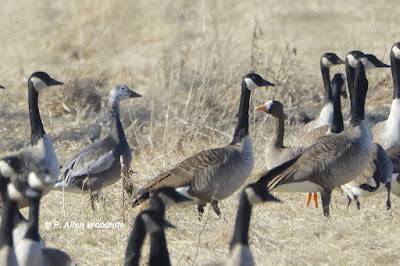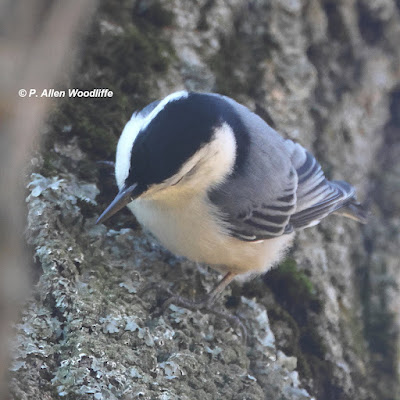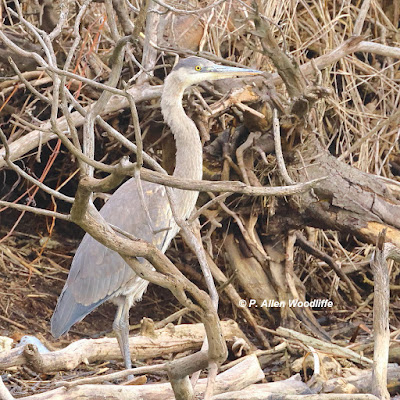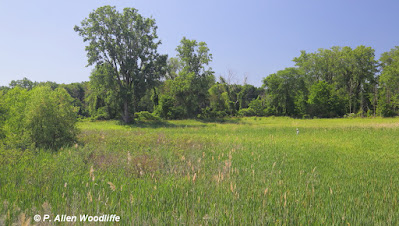OK technically, early to mid February is mid-winter, but with temperatures sometimes being like late March or even early April, it has felt anything but winter. I don't mind not having to shovel snow, however.
We did have a bit of snow in mid-January, and so the Mourning Dove nest that was occupied in late summer.....
....was now looking like this.But since then, I am sure even some of the not-so-regular winter birds are even a bit confused. Things like American Robins have been fairly widespread, even plentiful at times.Killdeer are beginning to show up in widespread areas. Perhaps some of them never really left southwestern Ontario.
Areas that typically are partly to totally frozen over, such as the Thames River at Jeannette's Creek, just upstream of where it outlets into Lake St. Clair, is mostly wide open.
No Great Egrets here like has happened occasionally in the past, but typically three or more Great Blue Herons are hanging out within sight of the boat launch.When the river is mostly frozen over, but with some open spots remaining, there can be a concentration of water fowl. And when that happens, there can be a concentration of Bald Eagles perched on trees along the river, keeping and eye open for an available injured bird to swoop down upon. On one occasion when these conditions occurred, I counted at least 28 eagles from this vantage point!
Elsewhere in wetland areas that are sometimes open and sometimes frozen over, there are lots of waterfowl using them. The Ridgetown Sewage Lagoons are productive, but mostly for Canada Geese. However there is often a much rarer goose species mixed in amongst them, such as a Snow Goose. In this case it is a young blue-phase Snow Goose, showing the mostly dark body and blotchy white head....
...as well as a Greater White-fronted Goose, or Speckle-belly, with its orange bill, white at the base, and brownish feathering with black bands across the belly.Both species are smaller than the average Canada Goose, so sometimes are hard to pick out when they are at a distance or mixed in with a lot of other geese. If the head of the White-front is not visible, sometimes the orange legs are. This next photo shows all three species together.
Canada Geese are by far the most abundant.
In other wetland areas, and sometimes in roadside ditches, one can come across various duck species. I came across these Northern Shovelers near Bear Creek.
The males are quite striking.........this one is going through its plumage development, and in a few weeks will likely look as crisp and clean as the other male.
Along another roadside ditch I came across a pair of Wood Ducks. They are often quite skittish, even though the hunting season is over, and the female was a short distance away so I didn't get her photo. But I manages a couple of quick shots of the male from the vehicle as follows.
While I was out roaming around the former Dover Twp, I encountered this Snowy Owl. I had checked this spot on numerous occasions over the past few weeks, as this general area often has one or more Snowies, but this year they have been hard to find. This is my first one of the winter.
It is barely a record shot, as it was several hundred metres from the road. With my telephoto lens combination, and further cropping, it is shown at about 100X magnification!
I've been to Rondeau a couple of times in recent days....no big surprise there. Birds have been quite widely scattered, and not always photograph-able. I managed to get this White-breasted Nuthatch as it scurried around a tree trunk....
The long-staying Red-headed Woodpecker continues in its usual little wooded patch at the corner of C-K Rd 15 an Wildwood Line.
If you would like to subscribe, or unsubscribe, to Nature Nuggets, send an email to: prairietramper@gmail.com






























































